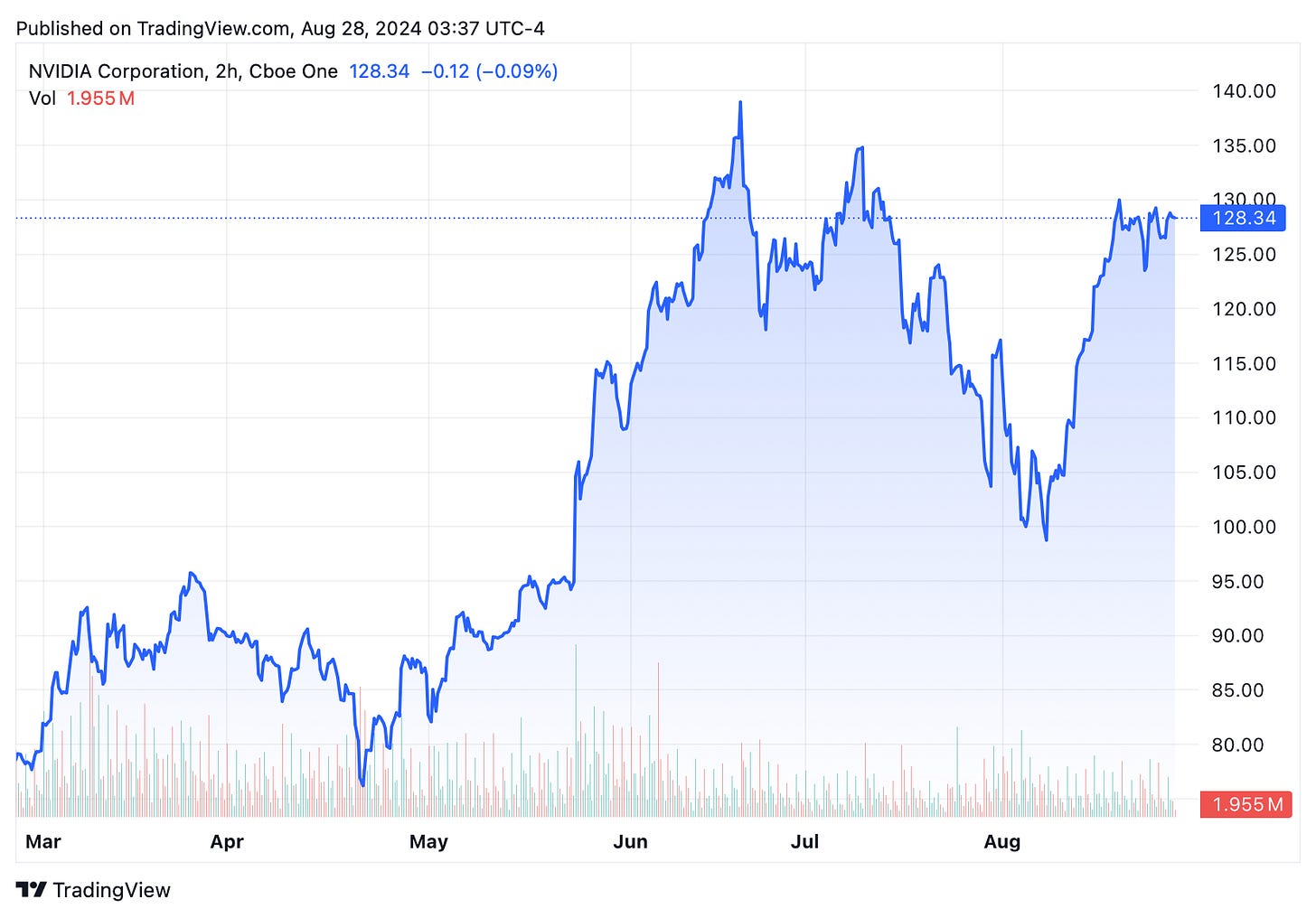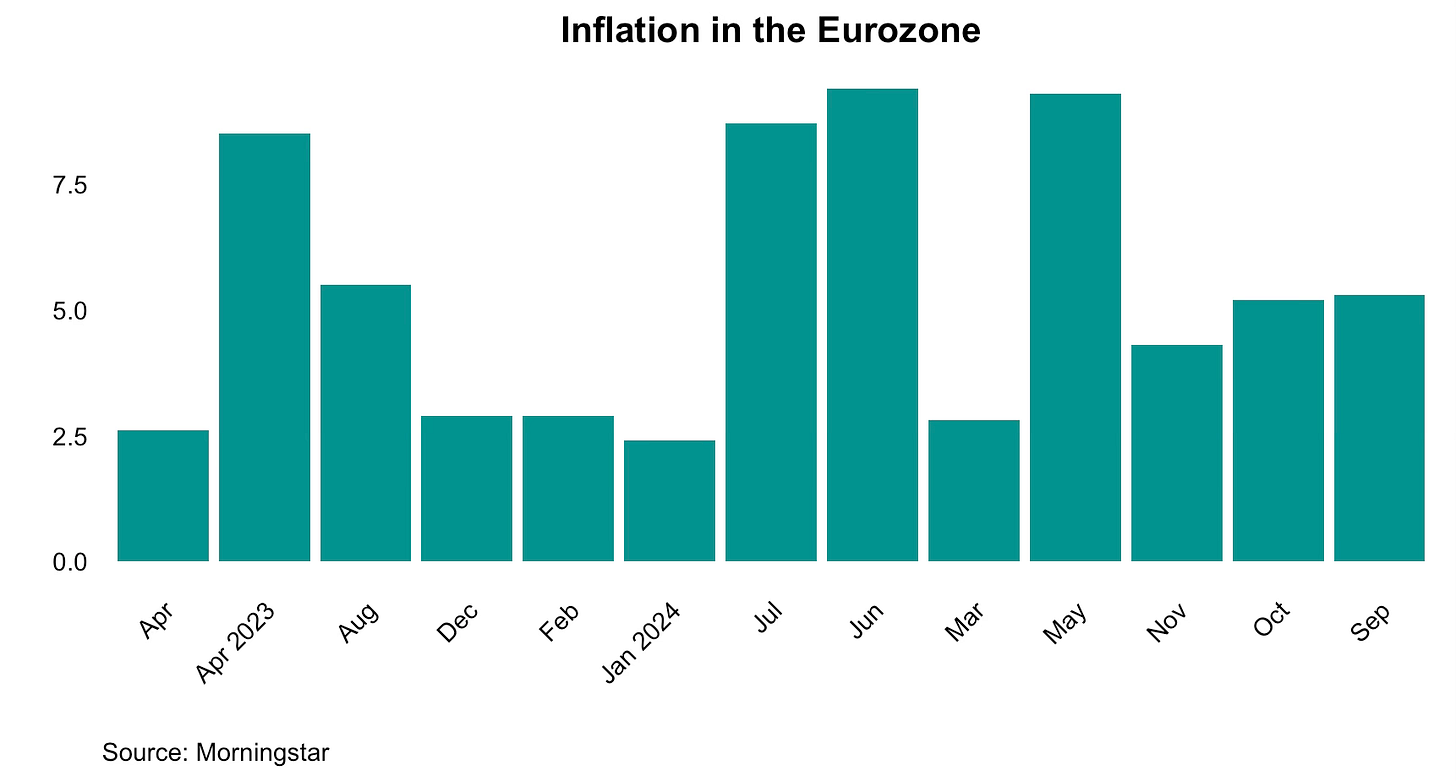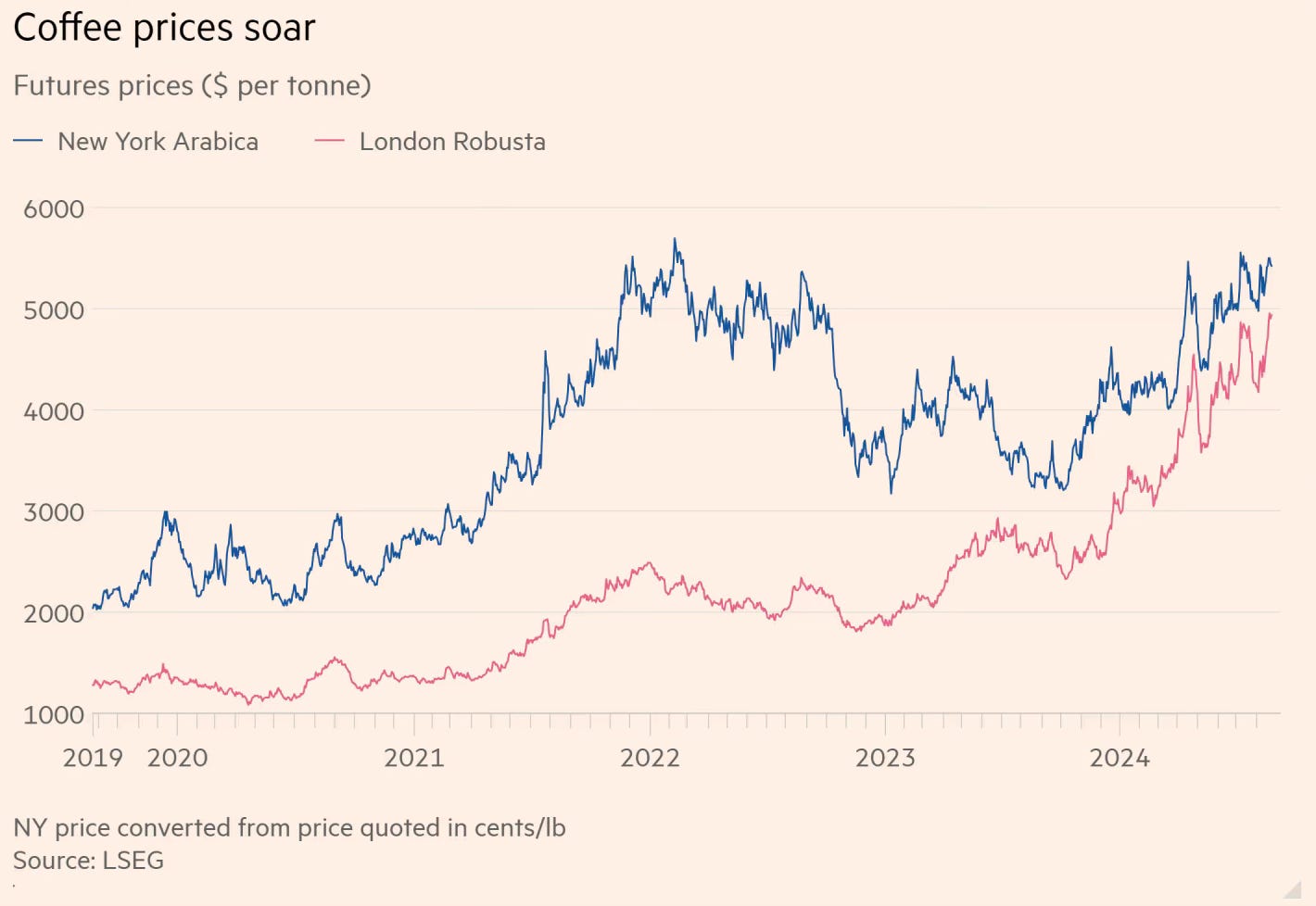Some of the Most Interesting Recent News
What to Expect from ECB and Fed's Next Moves, Commodities: Coffee Prices Surge to Record Highs, Nvidia's Q2 Earnings: High Expectations and Market Impact
What to Expect from ECB and Fed's Next Moves: as the ECB's September 12 meeting approaches, markets are watching inflation data, expecting a potential rate cut due to easing inflation and stable unemployment. The Fed is also likely to cut rates at its September 18 meeting, with global central banks leaning towards monetary easing in 2024. Market reactions will depend on the reasons behind these cuts, with cautious optimism for stocks and bonds.
Commodities: Coffee Prices Surge to Record Highs: coffee prices have hit record highs due to adverse weather conditions in major producing countries and rising shipping costs. Both robusta and arabica beans have surged, with speculators driving prices further. Challenges like drought in Vietnam and cold weather in Brazil are worsening the situation, leading to higher costs for consumers and roasters adjusting their blends.
Nvidia's Q2 Earnings: High Expectations and Market Impact: Nvidia's Q2 earnings report is expected to show a revenue surge to $28.68 billion, driven by strong AI chip demand. Concerns about potential AI spending slowdowns have led to recent stock volatility, making Nvidia’s performance critical for tech market sentiment.
What to Expect from ECB and Fed's Next Moves
As the European Central Bank (ECB) prepares for its meeting on September 12, markets are closely monitoring the upcoming flash data on eurozone inflation, set to be released on August 30. According to consensus estimates, inflation is expected to rise by 2.2 per cent compared to August 2023 levels, but this is lower than the 2.6 per cent year-on-year increase seen in July. Core inflation, which excludes volatile energy and food prices, is forecast to slightly decrease to 2.8 per cent from 2.9 per cent in July. Analysts are optimistic that the recent spike in inflation will decrease, moving closer to the ECB's target.
Michael Field, European market strategist at Morningstar, stated:
"Investors will be happy to hear that the spike in inflation we witnessed in July should abate once again in August, with economists expecting a headline reading of just 2.2 per cent, a 40 basis point fall on last month, and a number much closer to the European Central Bank’s targeted level."
The main contributors to July's inflation were services, food, alcohol, and tobacco, followed by non-energy industrial goods and energy. A significant factor in the expected drop in headline inflation is the reduction in energy prices compared to last year. Despite these improvements, core inflation, particularly in the services sector, is likely to remain elevated, partly due to temporary factors like the Olympics in France.
A question that may arise spontaneously is whether the ECB will cut rates in their next meeting. According to Morningstar, economists expect an interest cut as the minutes from the previous meeting are encouraging. ECB officials are open to cutting interest rates at their September meeting, seeing it as an opportunity to reassess monetary policy. They emphasise a data-driven approach, cautioning against focusing too much on individual data points. Analyst Tomasz Wieladek, Chief European Economist at T. Rowe Price, predicts a 25 basis point cut in September, with the ECB likely to continue gradual rate cuts until the deposit facility rate reaches 2.5%. Wieladek said that although services inflation has decreased, it is still too high, and the economy may be slowing down more than expected. He expects the ECB to cut interest rates by 25 basis points in September and continue with smaller cuts until the rate reaches 2.5 per cent, as the eurozone recovers from previous high energy prices.
Federal Reserve and US Monetary Policy
Across the Atlantic, the Federal Reserve is also at a pivotal moment. At the recent Jackson Hole symposium, Fed Chair Jerome Powell hinted at a potential interest rate cut in the upcoming September 18 meeting. This prospect has already generated positive reactions in the markets, with investors rushing to buy stocks and bonds while the US dollar weakened. The global trend among central banks in 2024 has been overwhelmingly toward monetary easing, with 84 rate cuts recorded so far and at least 40 more expected. This marks 2024 as one of the most significant years for expansive monetary policy since 2009 and 2020.
However, the impact of these rate cuts on the markets is not clear. The effect depends on why the Fed is cutting rates, whether it is a proactive move due to lower inflation or a necessary step to fight an impending recession. Historically, the first Fed rate cut does not always lead to a surge in stock prices. Instead, it often results in investors moving money into safer options like money market funds, especially if the economy is expected to experience a "soft landing" or into bonds if a recession is likely.
Experts are divided on what will happen next. Some, like BofA Securities, are cautiously optimistic, suggesting that lower long-term bond yields could make stocks more appealing. However, others, like Althea Spinozzi from Bg Saxo, are sceptical. She thinks the Fed's potential rate cut is more of a precaution against future risks rather than a response to current economic troubles. Investors are advised to be cautious, especially with sectors that are sensitive to interest rate changes, and to focus on defensive stocks that tend to do better when rates are low.
Commodities: Coffee Prices Surge to Record Highs
Due to adverse weather conditions, coffee prices have soared to record highs this year, and companies have been obligated to add lower-cost beans to their blends. Robusta beans used to make instant coffee and the higher quality arabica, have reached have both experienced a significant price increase, with the Global Benchmark, robusta futures, trading at $4,971 per tonne this week, while arabica futures traded in New York rose to $2.49 per pound. According to experts, including Steve Butler, co-founder of ChAI, a firm that utilises artificial intelligence for forecasting commodity prices, there is a potential for additional price hikes. Bulter added that this rally has attracted speculators, who are expected to keep increasing their investments, betting on the likelihood of continued price escalation.
(Source: FT)
These assumptions are backed by the fact that Brazil, responsible for one-third of global coffee production, is currently experiencing unusually cold weather. Furthermore, Vietnam, the leading producer of robusta coffee, is experiencing several months of drought, resulting in a fourth consecutive year of reduced global bean supplies. In addition to these challenges, rising shipping costs have contributed to the rise in price. Attacks by Houthi militants in the Red Sea have forced vessels to reroute around the Cape of Good Hope instead of passing through the Suez Canal, increasing transportation expenses. Roasters, already under pressure from higher bean prices, are passing these costs onto consumers, leading to noticeable price hikes in products like espresso in Italy, where prices have risen by 15% since 2021. These challenges have obligated roasters to source arabica from cheaper producers and incorporate more lower-grade beans into their blends to maintain profit margins.
Despite this rise in coffee prices, Butler stated that the coffee market is not as volatile as other commodities, such as cocoa earlier this year. However, a "battle" is expected between traders betting on continued price increases and those who took short positions during a recent market dip, adding further uncertainty to future price movements.
Nvidia's Q2 Earnings: High Expectations and Market Impact
Nvidia is expected to report its Q2 revenue on Wednesday, with projections indicating a doubling to $28.68 billion, driven by strong demand for AI chips. Investors, who have seen the stock soar over 150% this year, anticipate even greater performance from the company. The stock currently trades at 37 times its forward earnings, significantly higher than the average of 29 for top tech firms. However, any deviation from Wall Street expectations could significantly impact the broader AI rally and overall market sentiment.

The company’s powerful GPUs are central to AI infrastructure, with major tech players like Microsoft heavily investing in Nvidia’s technology. Despite this, there are concerns about whether Nvidia can continue to meet these high expectations, especially given the potential slowdown in AI spending by its biggest customers. These worries led to a temporary 20 per cent decline in Nvidia’s stock during July and early August, though a recent recovery has left the stock just 5 per cent below its record high in June. Investors remain cautious, knowing that Nvidia’s performance could set the tone for the broader AI and tech sectors.
References:
Sole 24 Ore: What to Expect from ECB and Fed's Next Moves
Morningstar: What to Expect from ECB and Fed's Next Moves
FT: Commodities: Coffee Prices Surge to Record Highs
Reuters: Nvidia's Q2 Earnings: High Expectations and Market Impact




